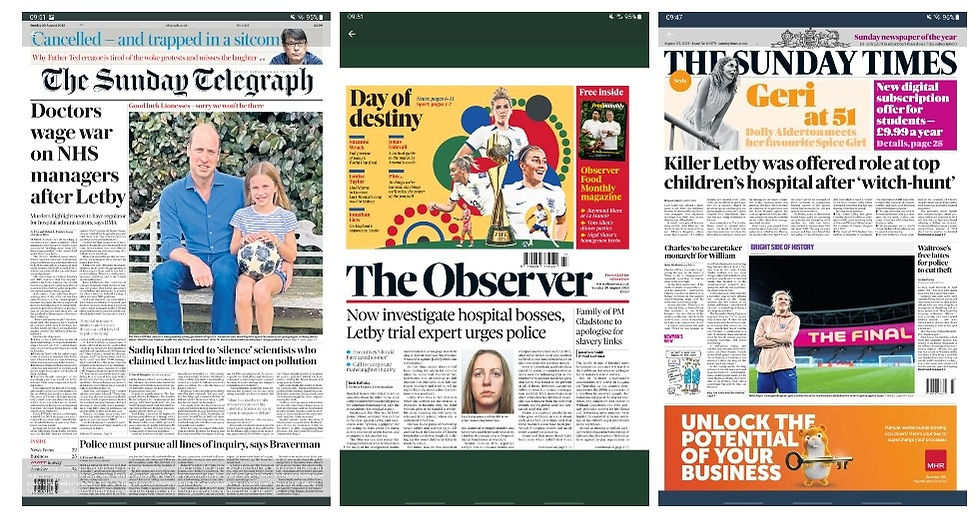Blowing in the wind…
- Kieran Seale

- Jan 30, 2023
- 3 min read
Updated: Jan 31, 2023

Climate change can be a gloomy subject, so it is important to celebrate successes when you come across them.
In 2022, nearly 27% of power in the UK was generated by wind power - a record amount.
Governments announce a lot of targets (one of the advantages of long term targets is that by the time they come to be evaluated, most people have forgotten that they had been set in the first place). So most of us probably won’t remember that back in 2009 the European Union’s renewables directive set the objective of generating 20% of the EU's energy supply from renewable sources by 2020. Within that, the UK’s target was 15% of energy generated. As it turned out, by 2020 24% of energy in the UK was being generated from wind power alone. Solar power and hydroelectric generated more on top of that.
All this has been achieved despite the government’s crazy ban on building new on-shore wind farms.
In the last few weeks I have become hooked on a website that displays how our electric power is generated at any one time:

The figure for solar is intermittent (there isn't much at night!), and the wind generation varies enormously too, but it is exciting to see the times like this when over half of our electricity is generated by renewables. [Massive thanks to Kate Rose Morley who has put this great site together purely for the social benefit].
Generating more than a quarter of electricity using wind power across the year is good in many ways. The relatively low cost, plus the reduction in funding to Putin’s Russia are obviously important. Most importantly it demonstrates that the battle to reduce carbon dioxide emissions can be won, and in a way that is compatible with other objectives. It demonstrates the possibility of change. If we can generate 25% using wind power, why not 50%. And if 50%, why not...
Now, I realise things aren’t that simple. There needs to be a mix of power sources, demand has peaks and provision is needed for days when there is not a lot of wind blowing. We have come a long way, but there is still a long way to go.
But there is another exciting development in this field which adds to the hope - the National Grid’s ‘Demand Flexibility Scheme’. The scheme encourages electricity users to reduce demand at peak times. Over a million people have signed up and the initial implementation seems to be working. Of course the idea of trying to smooth out peaks in demand isn’t a new one - I remember being the secretary to a ‘Peak/off peak fare differentials working party’ at London Transport in the early 1990’s. A key constraint with electricity - as it was with tube fares - is the ability of the technology to cope with variable pricing. The widespread use of smart metres has now made this possible for electricity.
The scheme strikes me as having the potential to go much further - many of us would be willing to change our behaviour around electricity use if we thought it could make a difference in tackling climate change.
Taking all these developments together offers hope for tackling problems in other fields too. We can envisage a world where:
new generation technology;
provision of high quality information to the public; and
demonstrating to people that their choices can make a real difference
combine to deliver valuable change.
Recent pandemic history shows that people are prepared to change their behaviour if they share an objective and believe that doing so will be worthwhile.
Let’s hope we can learn these lessons and speed up the pace of change across all our environmental targets.




Comments